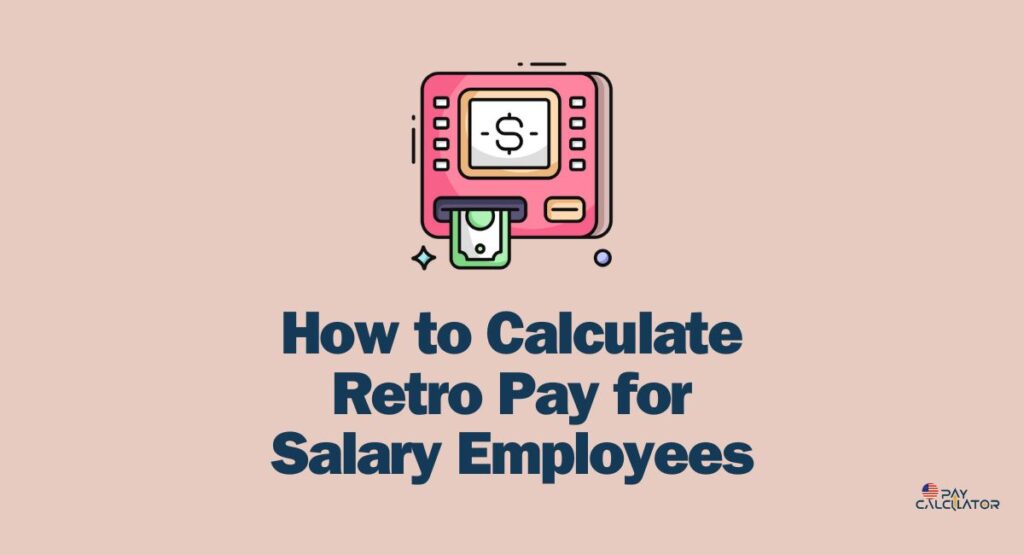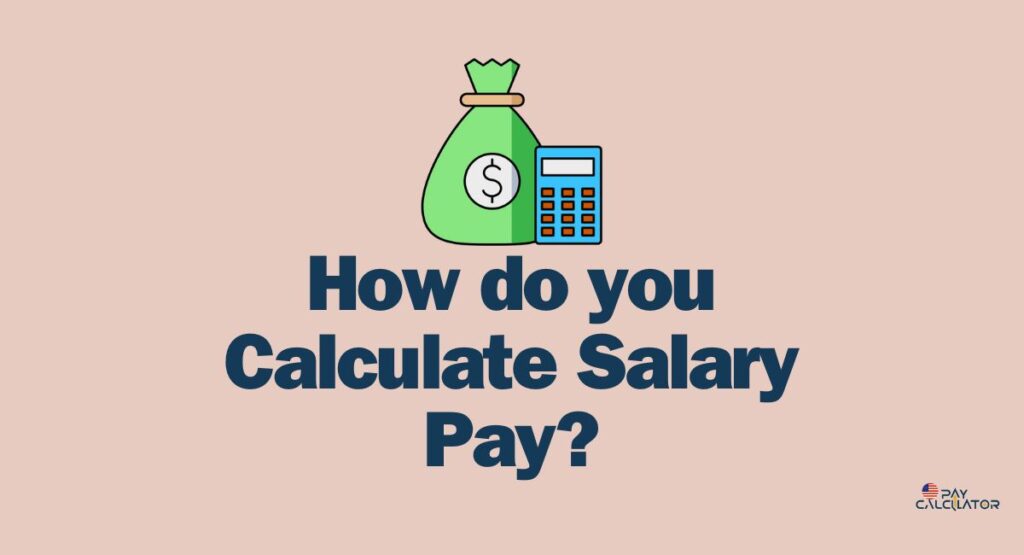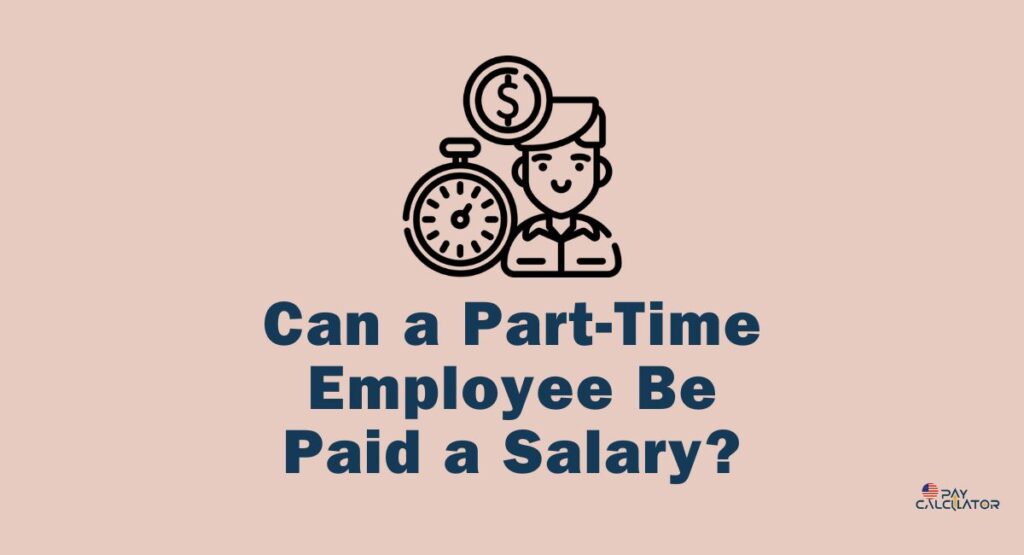
Employers use retro pay to correct payroll errors like miscalculations in overtime pay and other mistakes. In the following article, we will read about retro pay, its importance, its requirements and how to calculate retro pay for salary employees.
Retro Pay
The amount of money given as compensation included in the employee’s paycheck is known as retrospective pay or retro pay. This compensation is given by the employer to make up for the compensation shortfall reflected in the employee’s previous pay period.
The retroactive pay and back pay are two widely different for an employee. In back pay, the employee has not got repayment for the work he has done for a particular period. In contrast, retro pay occurs when there has been a miscalculation of the salary which got shown in the pay of that particular period.
Don’t miss out! Check our previously published article on Can You Pay an Employee Salary and Hourly?
Why is Retroactive pay needed?
Retro pay happens when there are few mistakes in the salary due to technical errors or even when HR makes mistakes in working out of salary. Due to the faults, the right compensation is not shown in the salary. The payment mistakes needs retro pay are mentioned below-
Overtime: When HR doesn’t remember to multiply the extra work hours of an employee with 1.5.
Shift Difference: If there is a mistake in the wages as the HR professional failed to make an increment in the pay for an employee, who works for specific hours even if he was present after his regular shift.
Raises: Whenever, HR fails to make the pay increase for an employee and add it into the accounting system. This can force the employer to use retro pay for some time.
When Retroactive pay is required?
Below, list is given when an employer might be need to do retro pay adjustments for his employees:
Incorrect calculations in wages: Sometimes, the HR department can make some incorrect calculations in the salary regardless of how many times they have run the software. Thereby, there is a chance of miscalculations in wages when there is an incorrect pay rate or a wrong number of working hours on the timesheet for an employee.
Bonuses: When an employee has earned some extra bonus beyond the salary or performed the quality work,then the employer announces bonuses for his dedication for the work.
Multiple pay rates : If there is an employee who works on two or more positions in your company, then it is compulsory to give him different pay rates. It is possible that at the time of period paycheck, there is a wrong entry of the rate when the HR runs the payroll.
Commissions: The employees like sales workers are sometimes given commissions for the work done. But due to some reasons, the employer often delays the commissions which impose the use of retro pay for the workers.
Pay raise: Whenever an employee is promoted in the company, it is most likely that there have been no changes in the database of the payroll system. Hence, it is most likely to confirm that the HR team runs his salary system on the basis of the old pay rate which can cause loss for the employee.
Shift differentials: Sometimes for the completion of particular projects ,the employees extend their shifts to finish the project before the deadline.
How to calculate retroactive pay?
To calculate retro pay without any hassle, an employer must subtract what they have paid to that employee from the amount that should have been paid for a particular time
Retroactive pay = Amount that should be paid for Period X – Amount paid actually for Period X
Here,
X – Number of days for which calculation is performed.
Let’s take two examples, for an hourly and for a salaried employee.
Have you seen it yet? Check our previously published article on How to Ask for Your Desired Salary?
Hourly Employee
Let’s assume your hourly employee has a good performance review and earns a pay raise from $22 per hour to $25 per hour. This increase takes effect at the start of the month, which occurs to decrease four days before the end of a pay period.
If the raise took effect with four days to go in the pay period, that means four days of pay (using eight hours per day based on a 40-hour workweek) are required to be accounted for in the retro accommodation.
New rate of $25 per hour – Old rate of $22 per hour = $3 per hour difference
4 days X 8 hours per day = 32 hours of payment at the old rate
$3 per hour X 32 hours of payment at the old rate = $96 due in retroactive pay
In this example, the employee should be paid $96 in gross retro pay.
Salaried Employee
There is an extra step to calculate the retro pay for salaried employees and remaining all steps are the same. Here, you have to check in the pay periods. Like are they semimonthly, such as the 15th and 30th of each month, or simply every two weeks?
For more information, check our previously published article on Do Salaried Employees get overtime pay?
Semimonthly would mean dividing the annual salary by 24 (12 months times two), while biweekly pay would mean dividing the annual salary by 26 (52 weeks in a year divided by two).
Let’s assume for this example; a salaried employee reaches a work anniversary that is accompanied by an agreed-upon raise, bringing their annual salary from $60,000 to $65,000. This particular company used to pay on a semi monthly basis which means that there are 24 pay periods per year.
The raise took consequences at the starting day of the month but will not be visible in paychecks until the second pay period of the month, which means that a full pay period should be counted for in retro pay.
- Old Annual Salary of $60,000 per 24 Pay
Periods = Old Rate of $2,500 each pay period
- New Annual Salary of $65,000/24 Pay Periods = New Rate of $2,708.33 each pay period
- New Rate of $2,708.33 – Old Rate of $2,500 = Difference of $208.33 each pay period
- $208.33 per pay period X one Pay Period = 208.33 dollars is due in retro pay
Tax holding for Retroactive pay
An employer in the US has to take care of various federal taxes for the smooth running of his organization. He sometimes needs to hold back particular payments to confirm that there are no losses to his company. According to the US government he must withhold:
- Social Security and Medicare taxes (FICA)
- State income tax (if applicable)
- Local income tax (if applicable)
- Federal income tax
Frequently asked questions
Retro pay is also known as wages, so basically the employees must have to pay taxes on it as they pay on the other income. Employers must impose all relevant payment tax withholdings, like social security and state and local income taxes, to an employee’s retro pay.
You’re getting retro pay because your employer discovered that you were underpaid in the past. This could have happened because of a delay in processing a raise, a mistake in your paycheck, or a new contract that increased your salary. To make things right, your employer is now paying you the difference owed for that period.
New rate of $25 per hour – Old rate of $22 per hour = $3 per hour difference.
4 days X 8 hours per day = 32 hours of payment at the old rate.
$3 per hour X 32 hours = $96 due in retroactive pay.
Conclusion
Sometimes, retroactive pay can confuse some new employers especially when it comes to retaining the taxes in these types of payments, it can get even harder and also become a time taking procedure for the employer. Above all the necessary points are mentioned, so that you can easily calculate retroactive pay for the hourly and salaried employees. But before knowing about how to calculate retro pay, you have to know how are hourly and salaried gross pay calculated.





